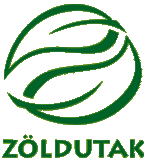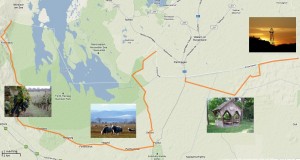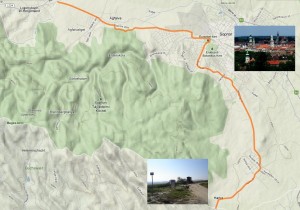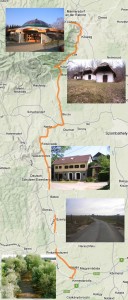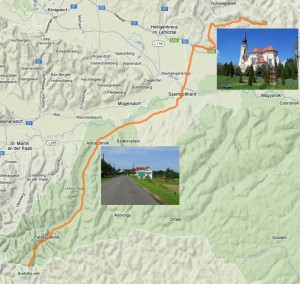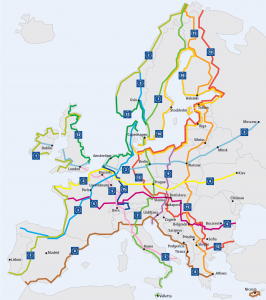EuroVelo 13 – Iron Curtain Trail
 What was the Iron Curtain?
What was the Iron Curtain?
Iron Curtain was the name of a practically impenetrable border seal dividing Europe for forty years to an eastern and a western part. Winston Churchill in his famous 1946 Fulton speech referred to this phrase, that since became the symbol of boundary between freedom and repression, democracy and dictatorship, progress and decline. However the word “iron” was not only a symbol, because the countries of the “Eastern Bloc” had planted the border zone with real barbed-wire, electric signal and trap mine systems, and kept away trespassers by gun. With the decline of the Soviet empire in the turn between 80’s and 90’s the Iron Curtain had vanished, and an earlier unthinkable chance of freedom emerged before the “socialist” countries. Today, when we can step anywhere, at any time, without any restriction through the re-opened state borders situated in the place of former walls and barbed-wire fences, Iron Curtain Trail reminds us those people for whom this was a desperate step towards freedom, and especially those who payed with their life for it.
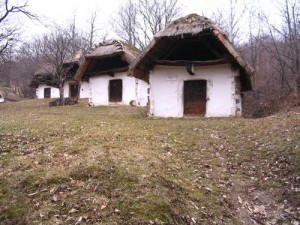 First steps
First steps
The infamous Iron Curtain that hermetically divided the two antagonistic world orders was dismantled for the first time by the participants of the 1989 Pan-European Picnic of Fertőrákos, Hungary. This act permitted of fleeing hundreds – later thousands – of East German “tourists” in the area to the West. According to Germans, it was the event where “the first brick was knocked out of the Berlin Wall”. While the history of second half of the twentieth century turned to a radically new direction, and post-communist countries gradually became members of the European Union, not many of us thought of our unexpected common treasure: the green corridor running along the former border seal, intact over the past decades, not ungraced by industrial objects. In 2004 for the protection of this treasury the International Union for Conservation of Nature (IUCN) launched its programme called European Green Belt, with the vision “to create the backbone of an ecological network, running from the Barents to the Black Sea that is a global symbol for transboundary cooperation in nature conservation and sustainable development.” The historical monuments, the still existing mementos of the former Iron Curtain and the untouched nature all around are offering special experiences for tourists.
 Where are we now?
Where are we now?
Iron Curtain Trail initiated by Michael Cramer, Member of European Parliament affects Hungary along the borders common with Austria, Slovenia, Croatia and Serbia from the Hanság to the Nook of River Maros. Newest member of the Trans-European cycle route network of European Cyclists’ Federation (ECF), the EuroVelo 13 follows the same itinerary. The first inland step is a survey and the making of a subsequent action plan for the Austrian border zone as part of “Sustainable Tourism” preparatory action of the European Commission. As Hungarian partners of the eleven member trans-national consortium Hungarian Environmental Partnership Foundation (Ökotárs) and Cycling Hungary Alliance (KMSZ) play important roles in the project. The works last from January to December of 2011, while we and our western neighbours are forming the route that meanders around the border. The Hungarian part of the route is 150 kilometres long from the Hanság through to the Land of Vends. In the near future we intend to continue the work including our southern border regions.
Maps of the Hungarian section with pictures

Contact

Hungarian Environmental Partnership Foundation (Ökotárs)
1056 Budapest, Szerb Str. 17-19, Hungary
Greenways programme
Krisztina Budai
phone: +36 20 279 7773
e-mail: budai@zoldutak.hu
Gergely Sepsei
phone: +36 30 856 5414
e-mail: sepsei@zoldutak.hu
